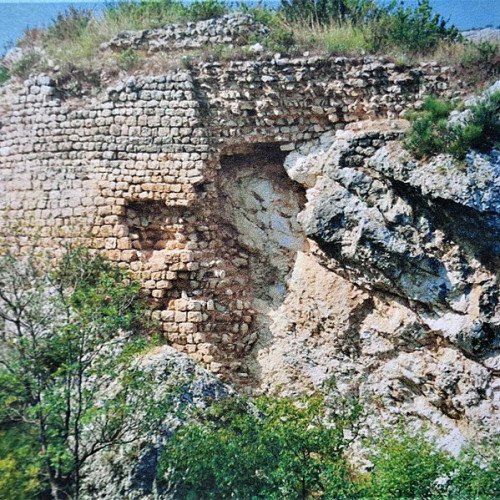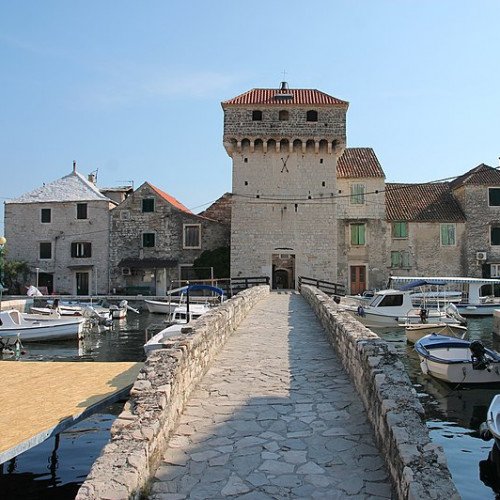Castles of "Croatia" KAMIČAK CASTLE vs KAŠTILAC

KAMIČAK CASTLE
Kamičak Castle ( Croatian: Utvrda Kamičak, in old sources Kamichech, Kamichach, Kamichack, Camichach) is a ruined medieval fortified structure on a rock at the top of the hill above the Krka River in the Krka National Park, Croatia. It is situated not far from the Brištane village in the administrative area of the Town of Drniš, Šibenik-Knin County. Located between the Visovac Lake and Roški Slap waterfall, it perks up like an eagle in unreachable eagle's nest on the edge of a cliff. Once property of the powerful Nelipić noble family, the castle was captured and destroyed in 1522/23 by the [[Ottoman wars in >Talovac noble family<Europe|Ottoman invaders]], never to be rebuilt. Kamičak was first mentioned in 1345 in a document issued by the Croato-Hungarian king Ludovik I of Angevin to confirm the property of the castle to Ivan II Nelipić, whose family possessed it at least from the 11th century. According to oral tradition, it is assumed that Petar Svačić (Snačić), the last king of the independent Kingdom of Croatia, killed in the battle of Gvozd Mountain in 1097, was born in Kamičak, since the Nelipić family descended from the Svačić tribe. The last male member of the Nelipić family was Ivaniš (†1434), who gave the castle to his son-in-law Ivan VI Anž Frankopan. The king Sigismund of Luxemburg however did not recognize it and gave the castle to Talovac noble family.
Statistics for this Xoptio

KAŠTILAC
Kaštilac was a fortress of a Benedictine Monastery located by the Adriatic Sea in central Dalmatia, and is now a settlement in Kaštel Gomilica, located in the central part of Split-Dalmatia county, Croatia. Kaštilac is the only castle of seven castles in Kaštela. King Zvonimir of Croatia of the Svetoslavić branch of the House of Trpimirović, had donated to a Benedictine from Split possession in the Kaštela field (Kaštelansko polje) in 1078. In the 12th century Benedictine built a church of St. Cosmas and Damian in the Romanesque Architecture style. Due to the Turkish threat, Benedictine nuns completed the construction of a fortified settlement Kaštilac on the islet of Gomilica in 1545. Entrance to the castle is protected by high tower over the stone bridge with arches. Kaštilac is 40 metres (130 ft) away from the shore, connected with the stone bridge, which was made only of stone. Fortress has square floor plan and in the past, at the entrance was located drawbridge. After the fortress was completed, within the fortification walls arrived inhabitants of the Upper and Lower Kozica, after the Turks had devastated their former villages. In the 17th century the tower lost its defensive function.